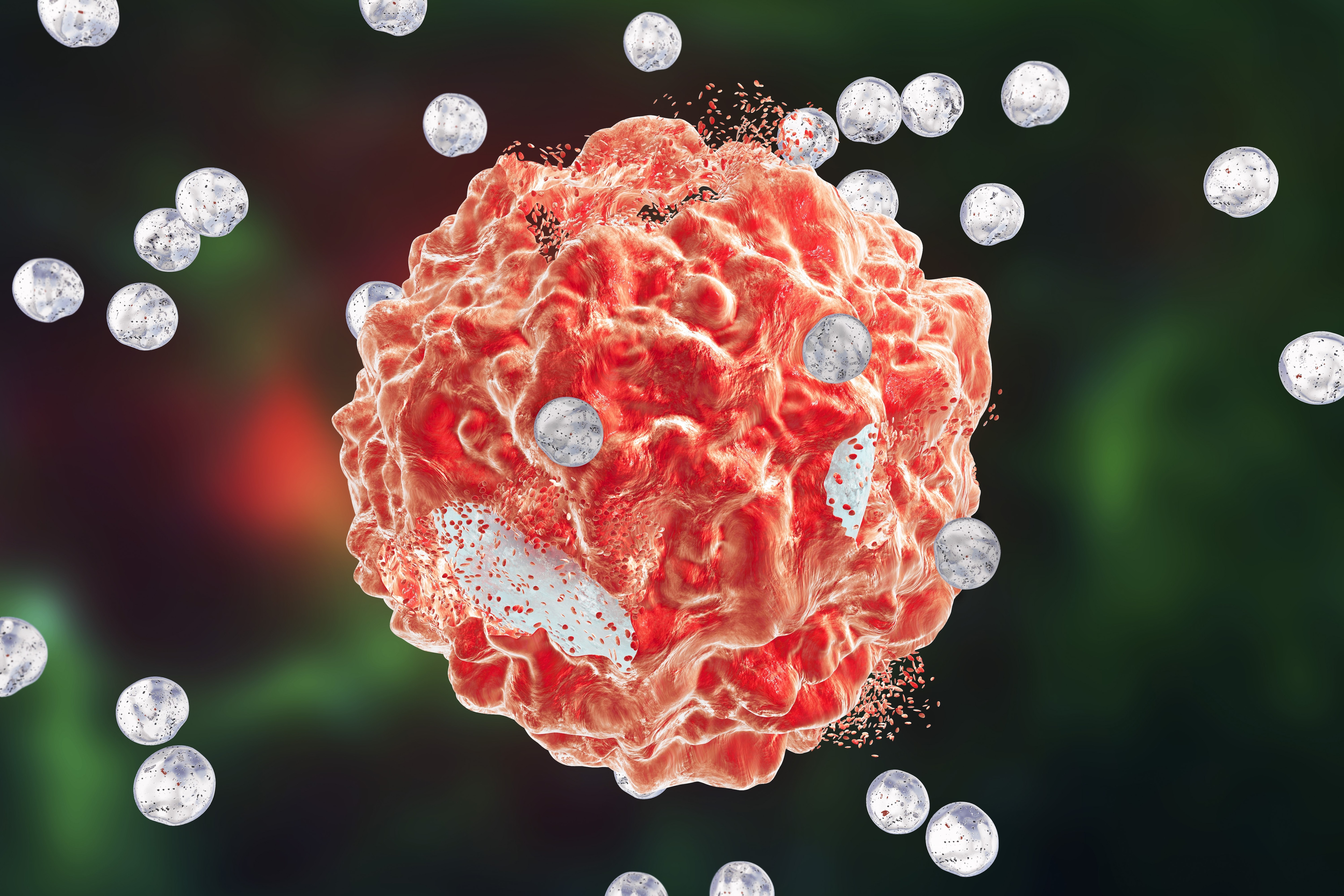Polymeric Microspheres & Nanoparticles

Novel drug delivery systems based on polymeric nanoparticles and microspheres as well as liposomes have demonstrated great potential in enhancing therapeutic effects of drugs. Biodegradable polymers with strong biocompatibilities such as poly(lactic-co-glycolic acid) (PLGA), polylactic acid (PLA), and polycaprolactone (PCL) have been widely used in developing particulate drug delivery systems. Active pharmaceutical ingredients (APIs), whether small molecules or biologic compounds, can be encapsulated into microspheres and nanoparticles or attached to a particle’s surface for specific drug delivery applications such as sustained release, targeted drug delivery, and protection of APIs from premature degradation. Upon administrating drug-loaded biodegradable nanoparticles and microparticles, the biocompatable polymer degrades in vivo by hydrolysis of the ester backbone into non-toxic products. The drug release rate can be modulated by selecting the right type of polymer and adjusting the encapsulation process.
Products
Popular Filters
Products
Related Resources
- Article: Degradex® Microspheres and Nanoparticles for Drug Delivery Research and Formulation Development
Study on how Degradex® PLGA microspheres and nanoparticles can be used for drug delivery research and formulation development.
- FAQs: Drug Delivery
Find answers to common questions about drug delivery. Review important points about encapsulation efficiency and loading capacity.
- Handbook: Nanomaterial Bioconjugation Techniques
This handbook is a guide for surface modification and bioconjugation of inorganic nanomaterials with applications in diagnostics.
- Article: RAFT Polymerization Procedures
RAFT polymerization offers precise control, enabling tailored synthesis of complex polymer structures.
- Article: RAFT: Choosing the Right Agent to Achieve Controlled Polymerization
Find reversible addition–fragmentation chain transfer(RAFT) polymerization process, classes of RAFT agents & applications.
- Article: Universal (Switchable) RAFT Agents for Well-Defined Block Copolymers
Universal (Switchable) RAFT agents allow for the polymerization of both less activated and more activated monomers and are ideal for the synthesis of well-defined block copolymers.
- Article: Block Copolymer Synthesis Using a Commercially Available Nitroxide-mediated Radical Polymerization (NMP) Initiator
Controlled radical polymerization, which provides exquisite tuning of macromolecular size, structure, composition and architecture, with experimental convenience, has become one of the most indispensable tools for polymer chemists.
- Article: RAFT Agents for Making Well-Defined Functionalized Polymers
Low-cost, high-purity RAFT Agents are vital for industrial RAFT polymerization. We supply effective agents for this technology.
- Article: Dendrons and Hyperbranched Polymers: Multifunctional Tools for Materials Chemistry
Dendrons in nanomaterials - Find features and benefits of polyester dendrons and hyperbranched polymer products.
Degradex® Polymeric Microspheres and Nanoparticles
We offer Degradex® PLGA- and PCL-based plain and fluorescent microspheres and nanoparticles. Plain PLGA microspheres and PLGA nanoparticles can be used in drug and RNA delivery formulations as control agents or be used to test system compatibility before loading an API into the carrier. Fluorescent nanoparticles and microspheres can be used in numerous imaging and diagnostic applications such as:
- the detection of binding events or signal enhancement
- fluid tracing
- cell tracking
- phagocytosis studies
- fluorescence microscopy
- drug discovery research
- drug carriers in which APIs can be attached to the particle surface and delivered
Both plain and fluorescent particles have surfaces functionalized with carboxyl groups that allow for covalent attachment of proteins, peptides, antibodies, antigens, and small molecules.
Degradex® poly(lactic-co-glycolic acid) (PLGA) and polycaprolactone microspheres and nanoparticles are biodegradable and biocompatible polymeric particles that are available in a range of 100 nm to 50 μm in diameter. Degradex® particles can be used to confirm drug carrier compatibility prior to formulation development. In addition, surface functionalization of the particles with carboxyl groups enables Degradex® particles to be used for targeted therapy and increased circulation time.
Our fluorescent poly(lactic-co-glycolic acid) (PLGA) particles with excitation/emission wavelengths of 460/500, 530/582, 644/665 and 780/820 nm allow easy visualization of particles in bioimaging and diagnostic applications, including cell tracking, phagocytosis studies, fluorescent microscopy, and drug discovery. We offer green, orange, red and near-IR fluorescent PLGA particles in a range of sizes from 100 nm to 50 μm in diameter.
To continue reading please sign in or create an account.
Don't Have An Account?